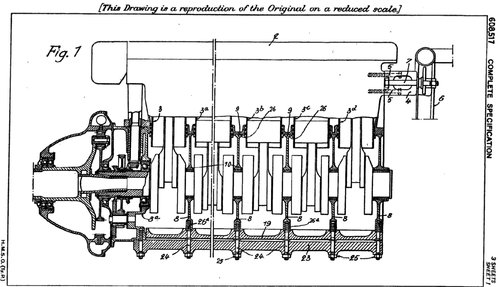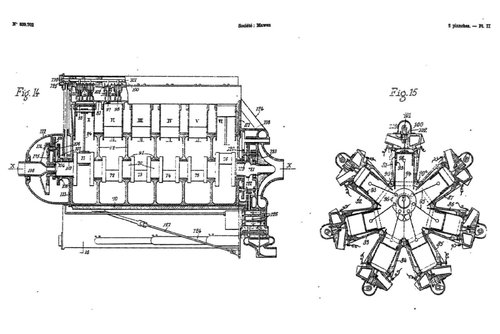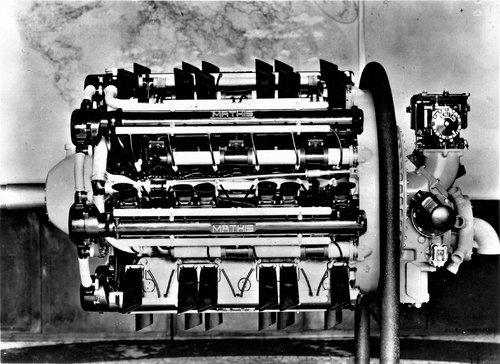You've probably heard of it: the MATHIS 'Vega' 42-cylinder aero-engine. Two prototypes produced but where did they get to?? One popular story doing the rounds is that they were spirited off to secluded hiding in the French Pyrenees ahead of the invading Germans. But the other story I've grown-up with as fact is that it was evacuated to England and gifted to Britain as a French contribution in aid of defeating the Germans. In reply to which the British Air ministry promptly pinched their noses and said "Non Merci!".
But is it true?? Is either story true?? Tantalisingly, are both stories true? - canny Emil Mathis may have decided to 'have a bet both ways' since there were two prototypes, i.e. one despatched to England and the other hidden in the mountains ..... will we ever know?
Well, as far as the Anglo-MATHIS is concerned there is in fact some indirect, corroborating evidence. You see, it's all about a book: " Aircraft Engines of the World, 1946" by Paul Howard WILKINSON, printed in America. In it, Wilkinson describes and illustrates it with a picture. Ahh-hh-h, that photograph! Time-travel time: long, long before computers and the internet everything took the long way, no less printing a book. For Wilkinson to have produced the 1946 version the manuscript would have been completed probably while WW2 was raging, in its death throes at least. Even in the immediate post-war chaos and from America perhaps, he would have struggled to make contact with the MATHIS concern in France. Here then, is the mystery. The photograph in the book matches no known MATHIS archive pictures and as far as is known - probably due to French military secrecy - there was no pre-German invasion release of photographs. So where did Wilkinson get the photograph from?? Surely, it could only have come from England.
Interestingly, and as the title suggests it also describes the aero-engines of newly-conquered Germany but the accompanying photographs are not the glamour shots typical of the glossy sales brochure. They look distressed, i.e. almost certainly salvaged from downed/captured/abandoned German aircraft. In which case and in all likelihood they would have been esconced in an R.A.E. storage facility (probably at Farnborough) for the purposes of technical evaluation. It stands to reason that the MATHIS 'Vega' would almost certainly have been stored there as well.
Military security restrictions would have been in place so for Wilkinson to have obtain a set of these photographs he would have needed an "inside man".
Hmm-mm-m, this is where it gets 'curiouser and curiouser'. The R.A.E employed a senior engineer by the name of - wait for it - one G.S. Wilkinson! Hands up who believes in coincidences!!
So, Paul Howard whispers in G.S.'s ear, "psst, how about getting me a batch of those photos for the book, brother" and would I be surprised to discover that the 'Vega' picture was amongst them?
Still, it is just a hypothesis but not an unreasonable one, all we need is the proof. And what of the post-war fate of the 'Vega'? Re-patriated to France or destined for the scrapper?
We don't know, but do you? First-hand eye-witnesses are likely all dead but the memories of descendants, old diaries and old photos might shed light on the mystery. Maybe there are old archive records, e.g. inventories of held engines, disposal/struck-off charge notices, etc.
Speak-up, speak-up! ...too many decades have past, this needs to be a mystery no more.



